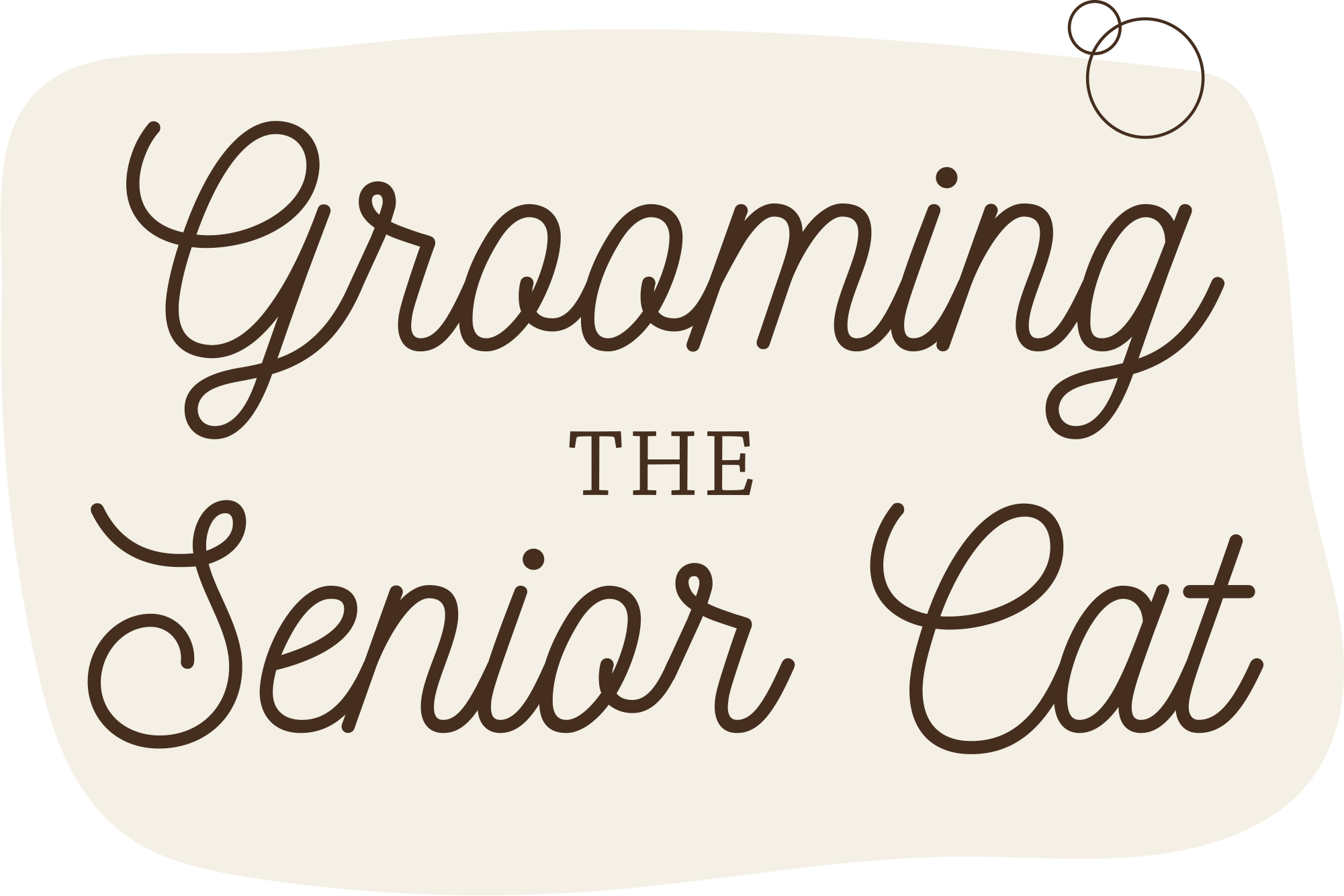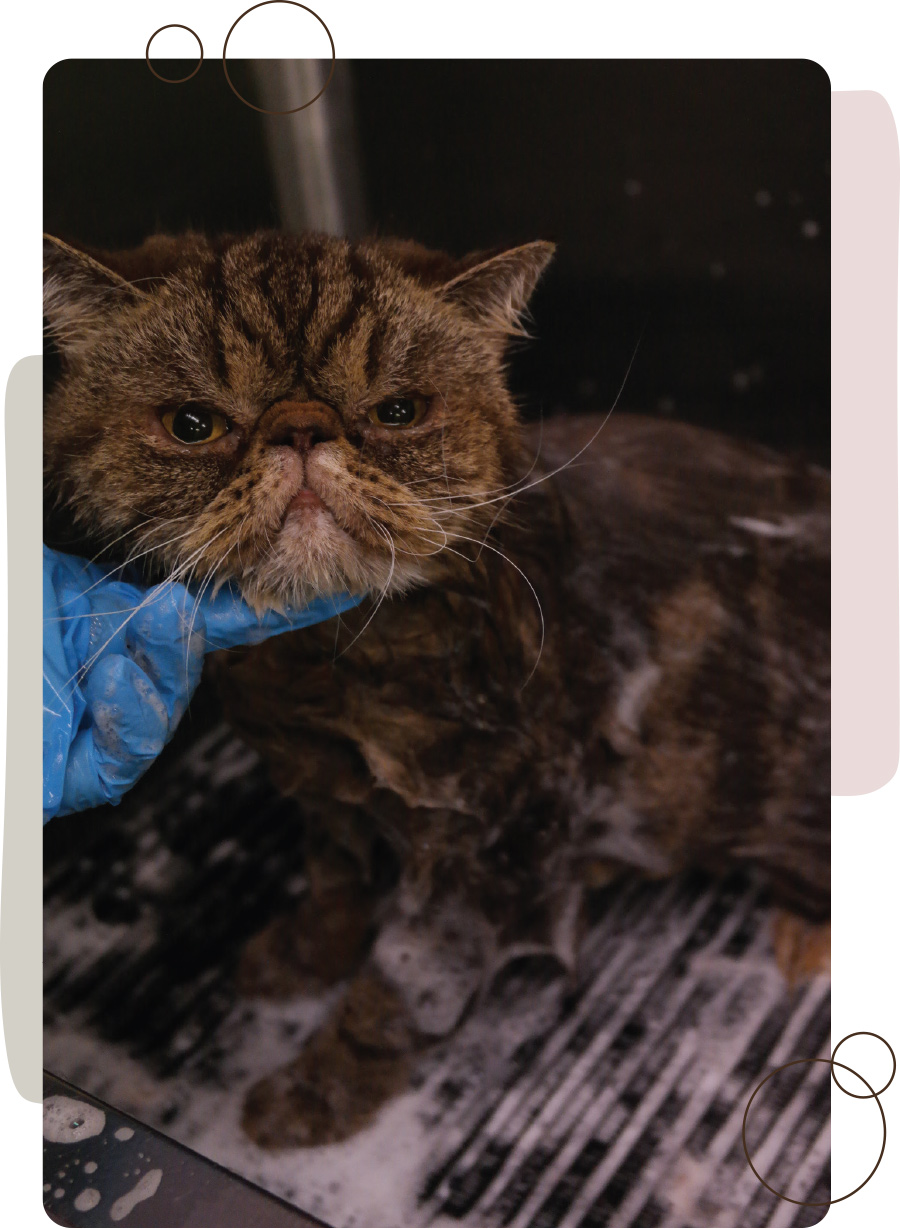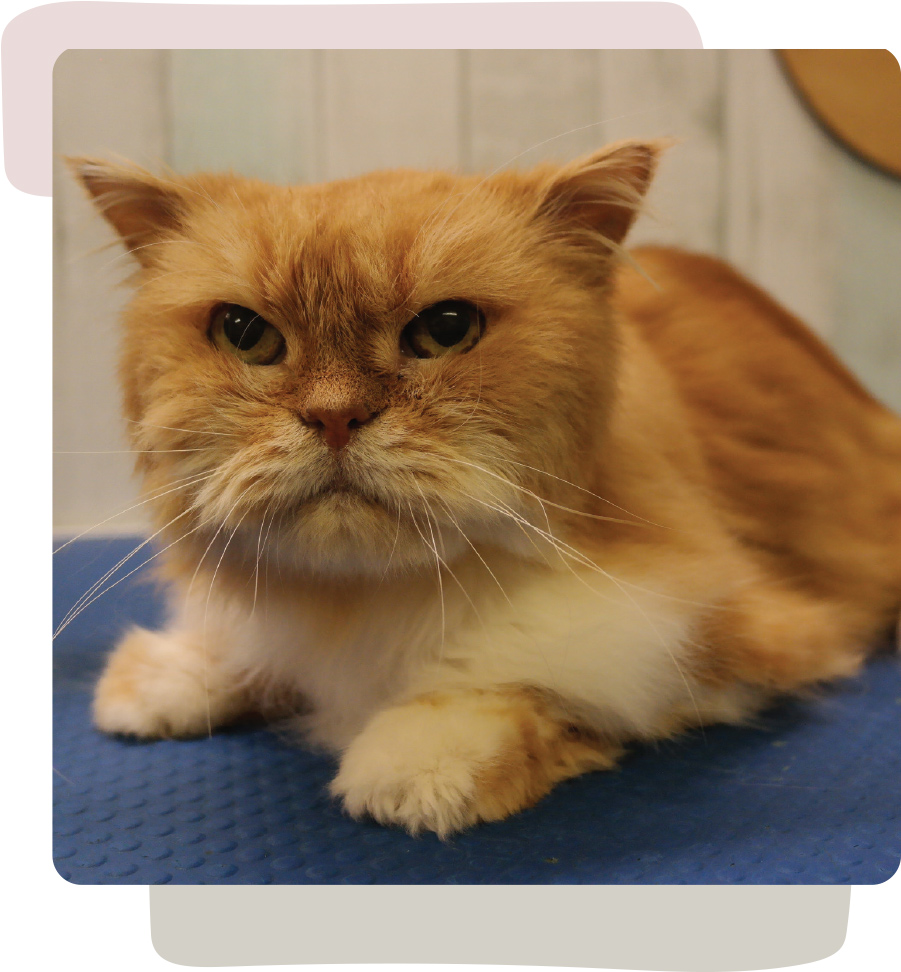

Photos by Lexie Goldsmith
 hen grooming a cat that is over seven years old, we need to take a lot more into consideration. After this age, a cat is considered senior, and therefore is at higher risk of injury or even death during or following a groom.
hen grooming a cat that is over seven years old, we need to take a lot more into consideration. After this age, a cat is considered senior, and therefore is at higher risk of injury or even death during or following a groom.
Similarly to when a human becomes elderly, a cat’s skin also ages. The skin layers lose elasticity and become thinner and easier to injure with clippers or even grooming tools. A cat’s skin is on average about 2-3mm thick, but as they become older, it can decrease to as thin as 0.5mm. This is one of the reasons why I prefer not to clip elderly cats, except for in cases of severe matting and neglect.
Preventing any issues during a groom is a must, so an extensive questionnaire and New Client form will prepare you and the owner to choose the best and most suitable groom for the cat.

- How old is your cat? Don’t disregard this answer if they are unsure. Sometimes a cat will be a senior but the owner is unaware because it has not visited a vet. I recommend all senior cats visit a vet before their first groom to check for heart, lung and kidney disease, and to determine if they are medically fit enough for a groom.
- Does your cat have any underlying health issues? Sometimes they will not answer this question properly. It is good to name all possible health concerns that will affect a grooming cat and have them listed on your form so a client doesn’t “forget” an important health issue.
- Has your cat had any previous or existing injuries? The cat may have been hit by a car 10 years ago, but over time, this will increase the arthritis presence in that area, which can be extremely painful for the cat when it comes to grooming.
The senior feline usually presents with some level of arthritis, so they will come to your salon with more sebum (oils) in the coat, dead undercoat and dandruff than other adult cats due to pain during self-grooming certain areas. Some health conditions will also cause senior cats to secrete excessive sebum to protect the coat and will take many washes to remove. But we need to also remember that this sebum is a mixture of fatty acids and it has antimicrobial properties, so try not to shampoo the cat too many times.
Due to the potential of arthritis, we must adjust our grooming to keep them as comfortable as possible. The use of a thick yoga mat or padding such as a bed or your lap helps immensely.
Senior cats will also have an increased risk of heart disease. Grooming is stressful and puts pressure on the body, causing the heart to pump at a faster pace (tachycardia). This can lead to collapse and cardiac arrest (the heart stopping). It is good to know the location of where you can check the femoral pulse of a cat, which is inside the cat’s thigh in the groin area. Slight pressure with a finger will produce the rhythm. Cats have a higher heart rate, at 140-220 beats per minute, and under stress, this will be higher. The best thing we can do is keep stress to a minimum and for as little time as possible.


When a cat is stressed, they will produce a short-term elevation in blood glucose (mild hypoglycaemia). This can push a diabetic cat into shock. With cats that are diabetic, they must see a vet to discuss any options that may be best for them, which can include home grooming or sedation.

Dental disease is also very common in senior cats. You may be able to tell from the smell, or by lifting the lip. If the cat has an advanced stage of dental disease, there will be pain associated in the jaw area, so any grooming around this area may cause stress or lead to aggression. And a cat bite from a senior cat can potentially cause more damage given the increased bacteria from their mouths. If you see any signs of dental disease (red gums and tarter) and observe pain, let the owner know, as this would be stressful for the cat’s everyday life and not just grooming.
Embedded nails are seen regularly in senior cats in their first grooming session. They are less active, therefore are not removing the layers on their nails required to keep them from embedding into the pad. If a cat presents with this, it is in fact painful and they will get upset having it removed, so it is better to address this at the end of the groom to prevent stress and aggressive behaviors.
During a groom, a senior cat may show signs of stress such as hissing, vocalising, urinating or defecating. If this occurs, try to continue the groom in another session. If a cat has blood in their urine or feces, or starts coughing, they will need to see a vet right away.
Using methods such as lap grooming and lap drying can help keep the cat at a lower stress level. Choosing a regular bathing schedule (many senior cats love a warm bath and blow-dry) instead of a clip where you need to continuously stretch the skin and move the cat around into uncomfortable positions is a far kinder approach to grooming the senior.
After the groom, I also make sure the client keeps an eye out for signs of ill health. If a cat decides to not eat or drink after the groom, they will need to see a vet right away, as this can indicate signs of kidney failure. Contact the client that afternoon or the day after the groom to check up on the cat’s comfort and health. This not only reminds the client that their cat is a senior and that they need to observe their cat more closely, but it also shows that you care about the client and their pet.
Lexie Goldsmith is an International Certified Master Cat Groomer and Qualified former Veterinary Nurse that has been grooming cats for over 15 years. Lexie teaches her low-stress cat grooming techniques online worldwide at learncatgrooming.com.au and in person in her salon, Lexie’s Dog and Cat Grooming, in Perth, Western Australia.

